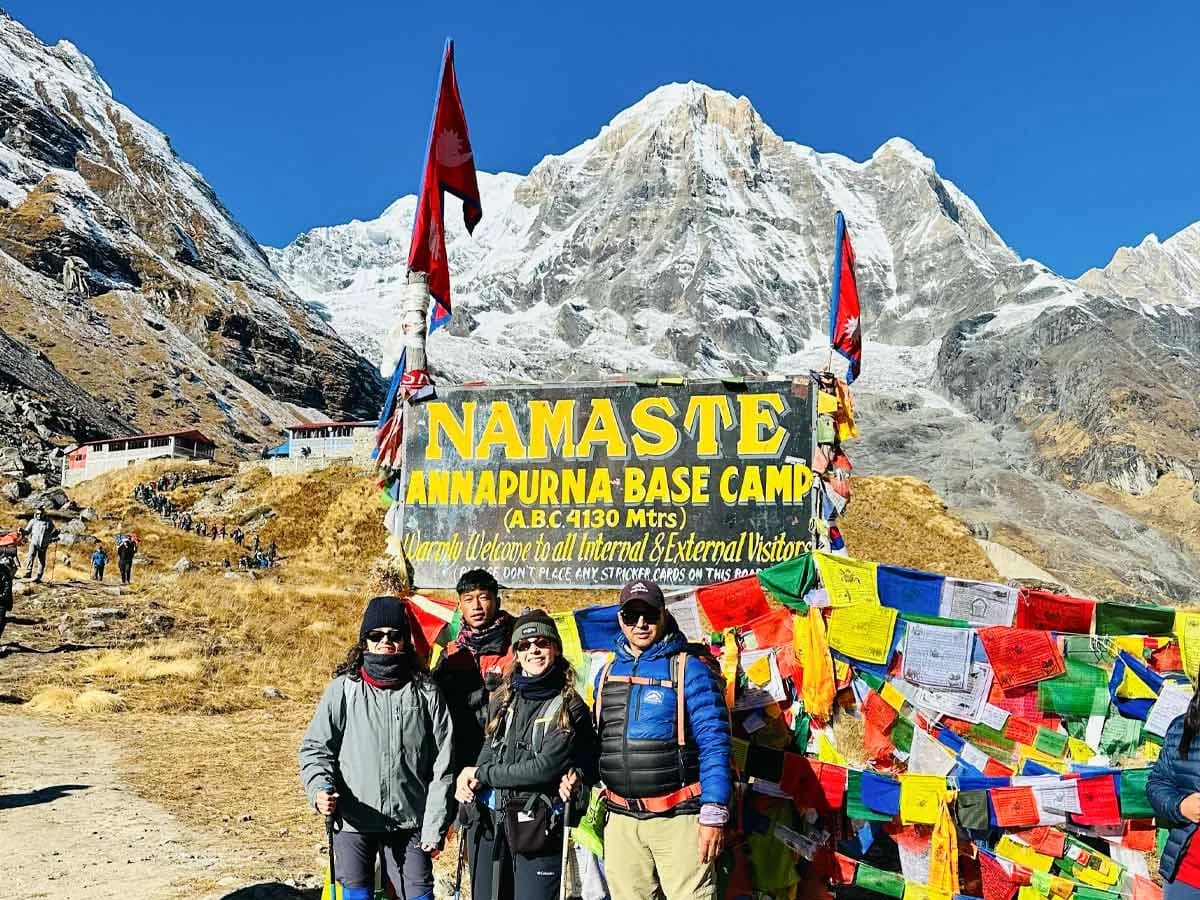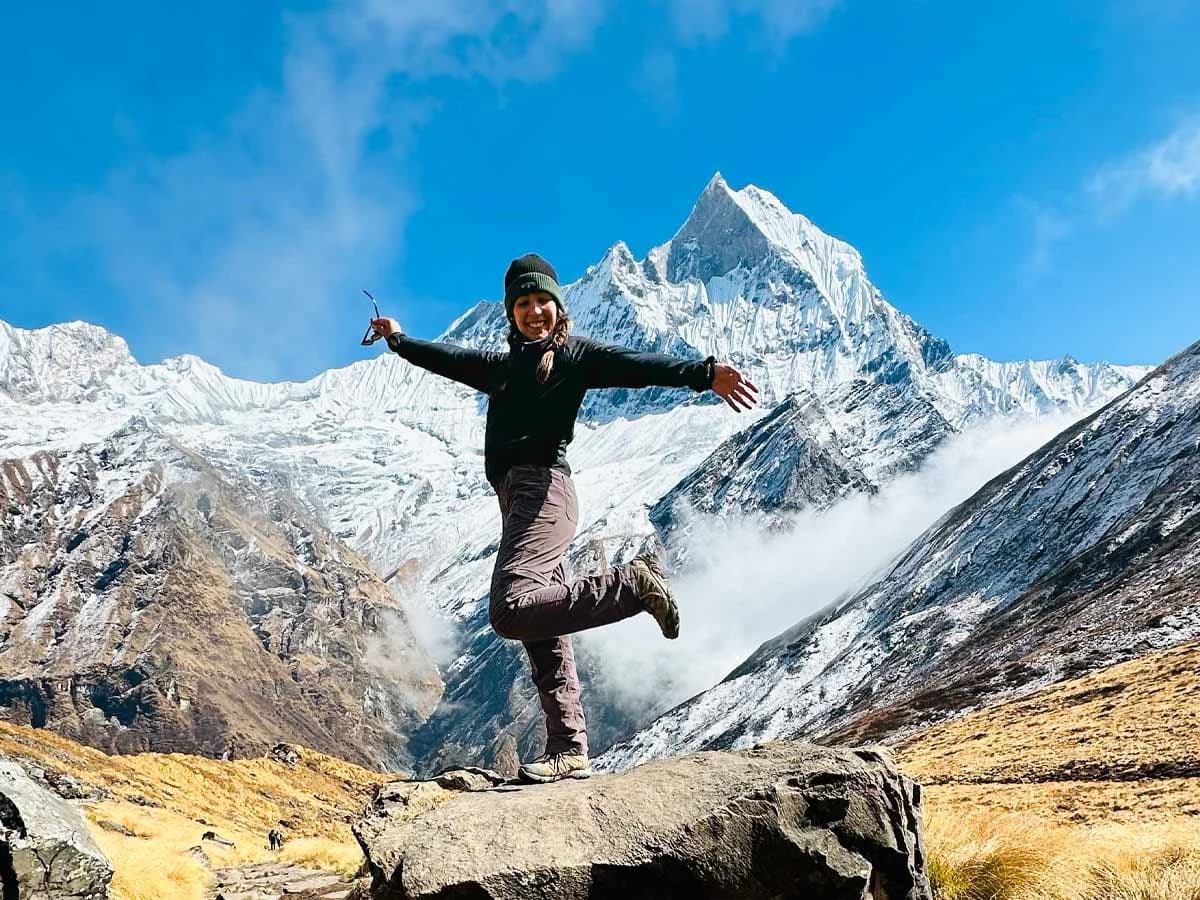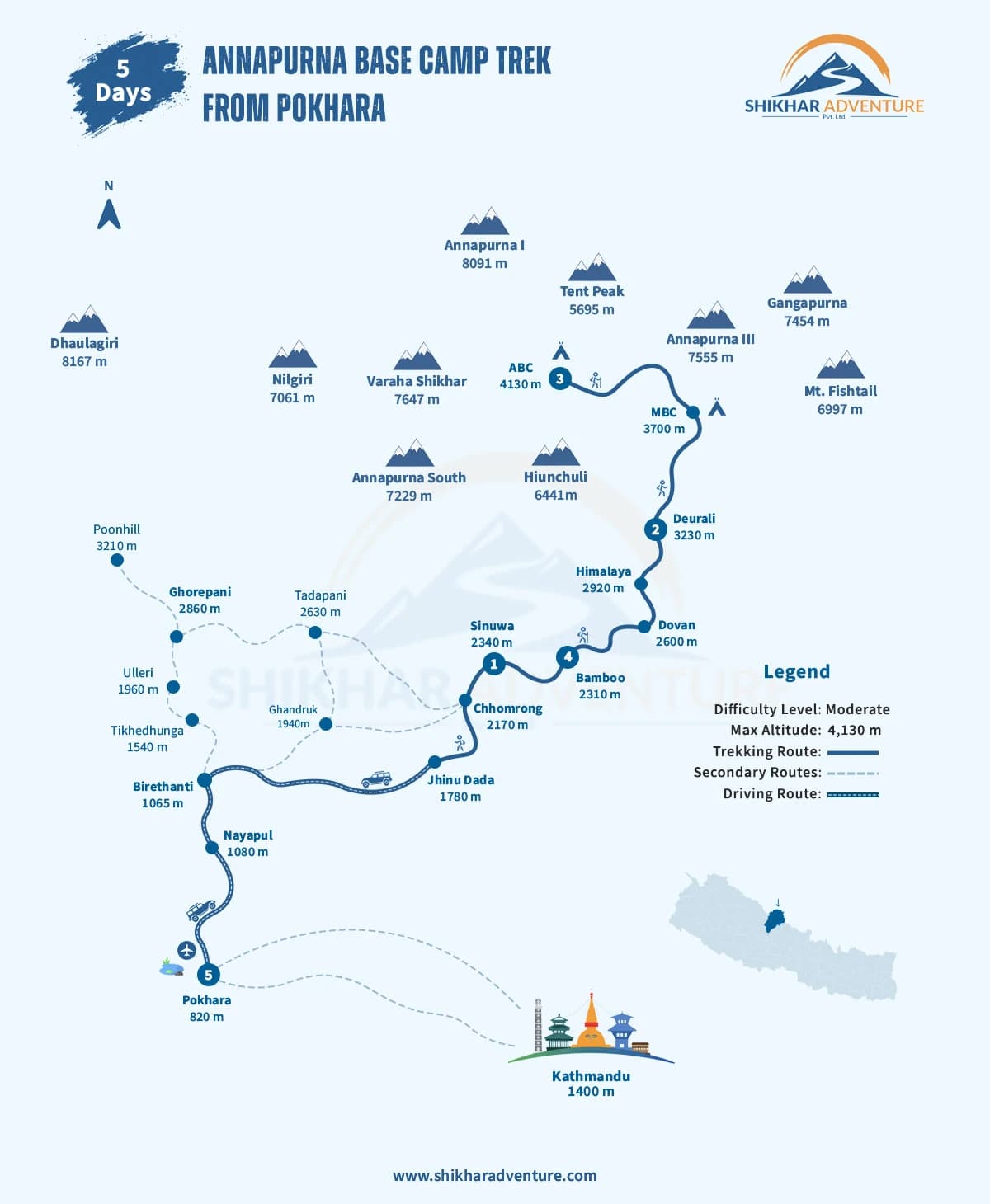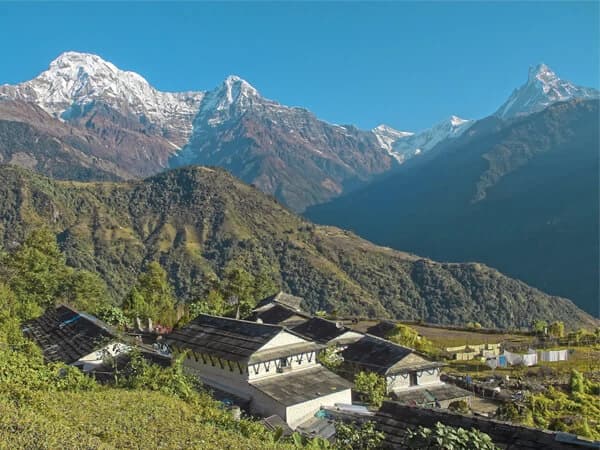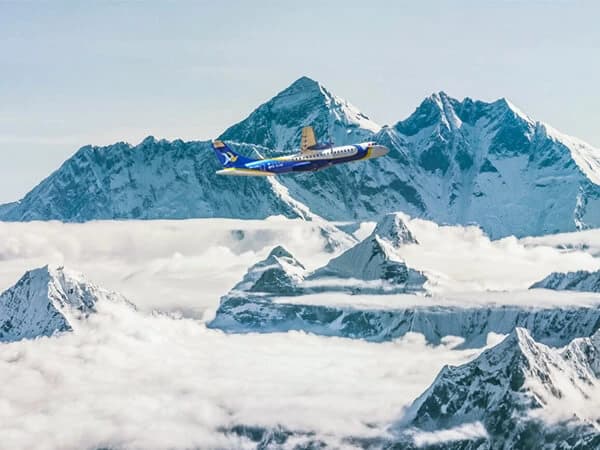Trek Overview
The Annapurna Base Camp Trek from Pokhara is one of the most exciting adventures across Nepal, inclusive of great mountain views, rich culture, and lots of landscapes. In just 5 days, It takes trekkers deep into the Annapurna region, which starts right from the lovely city of Pokhara.
Best for nature lovers and trekkers, one goes through forests, waterfalls, and then crosses over the villages full of charm. All the way, trekkers get to enjoy the panoramic view of the Himalayan peak towers—this interesting section of them is Annapurna and Machapuchare. They dominate the horizon, giving good feelings all through the journey.
At 4,130 meters, Annapurna Base Camp (ABC) is the highest point of the trek. The feeling of reaching this iconic spot after 2 days of trekking is hard to describe. You’re surrounded by snow-capped peaks in every direction. The beauty of this natural amphitheater makes the journey worthwhile.
It starts in the green forests with rhododendrons, bamboos, and oak trees. As you go up the look changes: the forests turn into mountain fields and then rough land; that means that each day is different because of a different landscape.
You will pass through suspension bridges over rivers, see terraces under farmed agriculture. These hillside farms are a fount of some clue to what powerful people these locals are. In this delightful mix, nature's beauty combines with human ingenuity.
Unlike the Annapurna Base Camp Trek, the trek does not go very high in altitude, but rather, it is a cultural trek made by passing through the villages of Gurungs and Magars. Their houses, style of living, and traditions tell the long history of life in these regions and are the windows to mountain life.
You will be accommodated in tea houses along your trek. A few teahouses are managed by the locals themselves. The guesthouses offer a warm spot to rest and taste typical Nepalese food. Dal bhat, or rice with lentils, is the traditional meal and your diet throughout your journey.
This Annapurna Base Camp Trek is not too hard, it can be quite tough in its altitude and steep parts but is generally manageable by most trekkers. Naturally fit persons find this trek easy even for beginners as trails are well marked and the daily distances one has to walk are easy to handle.
It's a shorter hike, but no less rewarding. When you finally do get to Annapurna Base Camp, the feeling of success is strong. At that point, you'll feel as though you've been airlifted into the heart of the Himalayas.
Highlights of trekking to Annapurna Base Camp
- Pass through beautiful rhododendron forests and over rivers, observing different perspectives on the scenes in Annapurna's area.
- Observe carefully those high mountains of Annapurna and Machapuchhare.
- Get absorbed in the local cultures: Gurung and Magar villages teeming with people warm in hospitality.
- Annapurna Base Camp is a beautiful sunrise destination with the snow-capped mountains.
- Enjoy a challenging but accessible, 5-day trek—perfect for novices and experienced trekkers.
- Find comfort in the nature around with tall, mighty Himalayan mountains everywhere.
When are the best months to visit Annapurna Base Camp?
The best time to trek is in spring, between March and May, and in autumn, from September to November. The weather truly is the best; the time of year is clear and mild. Then in the spring, the rhododendron forests in bloom will add some wonderful color.
Autumn affords the clearest views of the surrounding peaks. The trail will see more people on it during these months, but the great views and good weather make it worth the hike.


